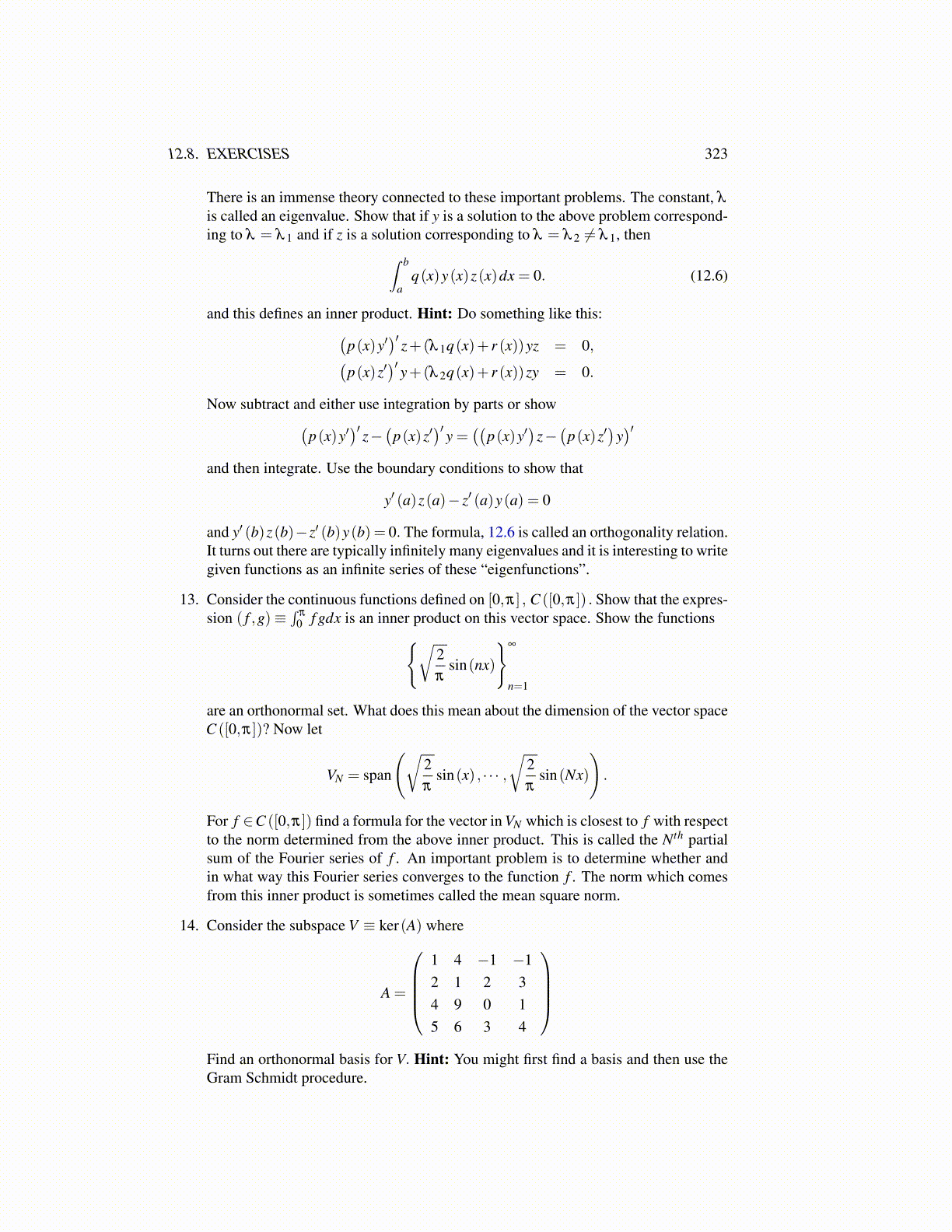
12.8. EXERCISES 323
There is an immense theory connected to these important problems. The constant, λ
is called an eigenvalue. Show that if y is a solution to the above problem correspond-ing to λ = λ 1 and if z is a solution corresponding to λ = λ 2 ̸= λ 1, then∫ b
aq(x)y(x)z(x)dx = 0. (12.6)
and this defines an inner product. Hint: Do something like this:(p(x)y′
)′ z+(λ 1q(x)+ r (x))yz = 0,(p(x)z′
)′ y+(λ 2q(x)+ r (x))zy = 0.
Now subtract and either use integration by parts or show(p(x)y′
)′ z− (p(x)z′)′ y = ((p(x)y′
)z−(
p(x)z′)
y)′
and then integrate. Use the boundary conditions to show that
y′ (a)z(a)− z′ (a)y(a) = 0
and y′ (b)z(b)−z′ (b)y(b) = 0. The formula, 12.6 is called an orthogonality relation.It turns out there are typically infinitely many eigenvalues and it is interesting to writegiven functions as an infinite series of these “eigenfunctions”.
13. Consider the continuous functions defined on [0,π] , C ([0,π]) . Show that the expres-sion ( f ,g)≡
∫π
0 f gdx is an inner product on this vector space. Show the functions{√2π
sin(nx)
}∞
n=1
are an orthonormal set. What does this mean about the dimension of the vector spaceC ([0,π])? Now let
VN = span
(√2π
sin(x) , · · · ,√
2π
sin(Nx)
).
For f ∈C ([0,π]) find a formula for the vector in VN which is closest to f with respectto the norm determined from the above inner product. This is called the Nth partialsum of the Fourier series of f . An important problem is to determine whether andin what way this Fourier series converges to the function f . The norm which comesfrom this inner product is sometimes called the mean square norm.
14. Consider the subspace V ≡ ker(A) where
A =
1 4 −1 −12 1 2 34 9 0 15 6 3 4
Find an orthonormal basis for V. Hint: You might first find a basis and then use theGram Schmidt procedure.